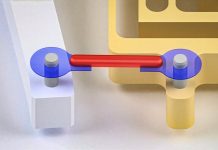
For decades, battery experts have warned that charging a battery too quickly is a recipe for disaster.
Fast charging was believed to cause damage, shorten the battery’s life, and even lead to dangerous failures.
But a team at Georgia Tech has turned this assumption upside down with zinc-ion batteries. To their surprise, charging these batteries faster actually made them last longer.
The research, led by Hailong Chen, an associate professor in the George W. Woodruff School of Mechanical Engineering, was recently published in Nature Communications.
Their discovery could change how we power homes, hospitals, and the electrical grid. It also opens the door to safer, more affordable alternatives to today’s lithium-ion batteries.
Why zinc?
Zinc-ion batteries offer several big advantages over lithium-ion technology. Zinc is one of the most abundant metals in the world and is mined widely, making it cheaper and easier to source than lithium.
Zinc batteries are also nonflammable, meaning they won’t catch fire—a major safety benefit. And they’re easier on the environment, since zinc is less toxic and more recyclable than lithium materials.
The biggest drawback of zinc-ion batteries has always been dendrites. These sharp, needle-like structures form on the zinc surface during charging and can eventually pierce through the battery, causing short circuits and failure. But Chen’s team discovered that charging zinc batteries faster prevents dendrites from forming. Instead, zinc settles into neat, smooth layers, like stacked books. This structure avoids dangerous shorts and helps the battery last longer.
“It goes against the conventional thinking that fast charging shortens battery life,” Chen explained. “What we found expands people’s understanding of fast charging and could rewrite how we design batteries.”
The breakthrough solves a major problem for zinc batteries, but only on one side of the battery—the anode.
The other side, called the cathode, still needs improvement to keep pace. Chen’s team is now working to strengthen the cathode and experimenting with mixing zinc with other materials to boost durability even further.
This discovery didn’t happen by accident. The team built a new tool that let them watch zinc behavior under different charging speeds in real time. Unlike traditional experiments that test one variable at a time, their system allowed them to study hundreds of conditions simultaneously. For the first time, they could directly see how fast charging led to smooth zinc layers instead of dangerous spikes.
If all goes well, Chen believes zinc-ion batteries could be ready for everyday use in about five years. They could be used for storing solar energy at home, stabilizing the grid, or powering hospitals that need reliable backup systems.
With growing demand for clean energy and growing concerns about lithium supply and safety, the timing couldn’t be better. By flipping a long-held belief in battery science, zinc-ion batteries may soon light up a safer, more sustainable future.



